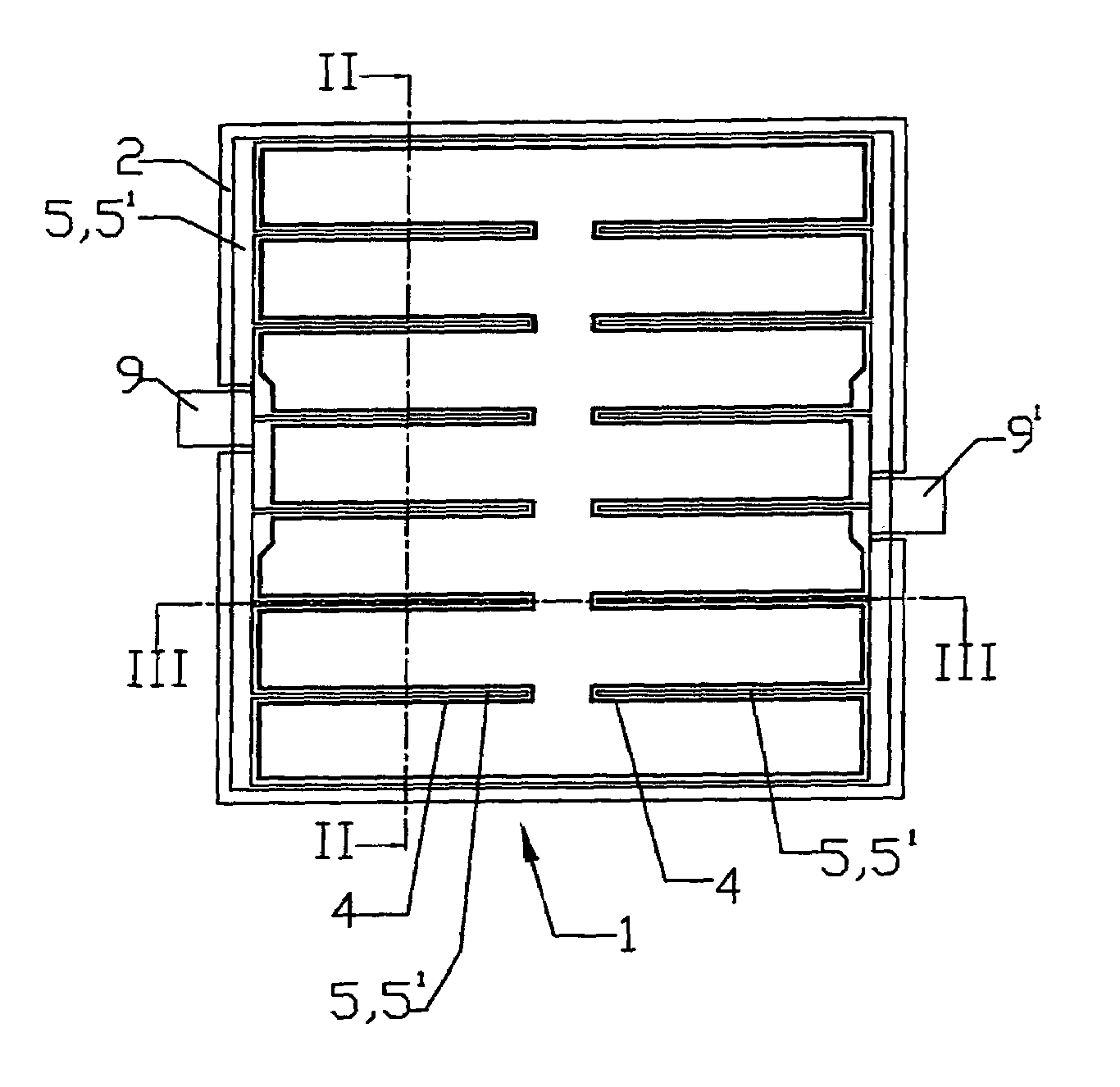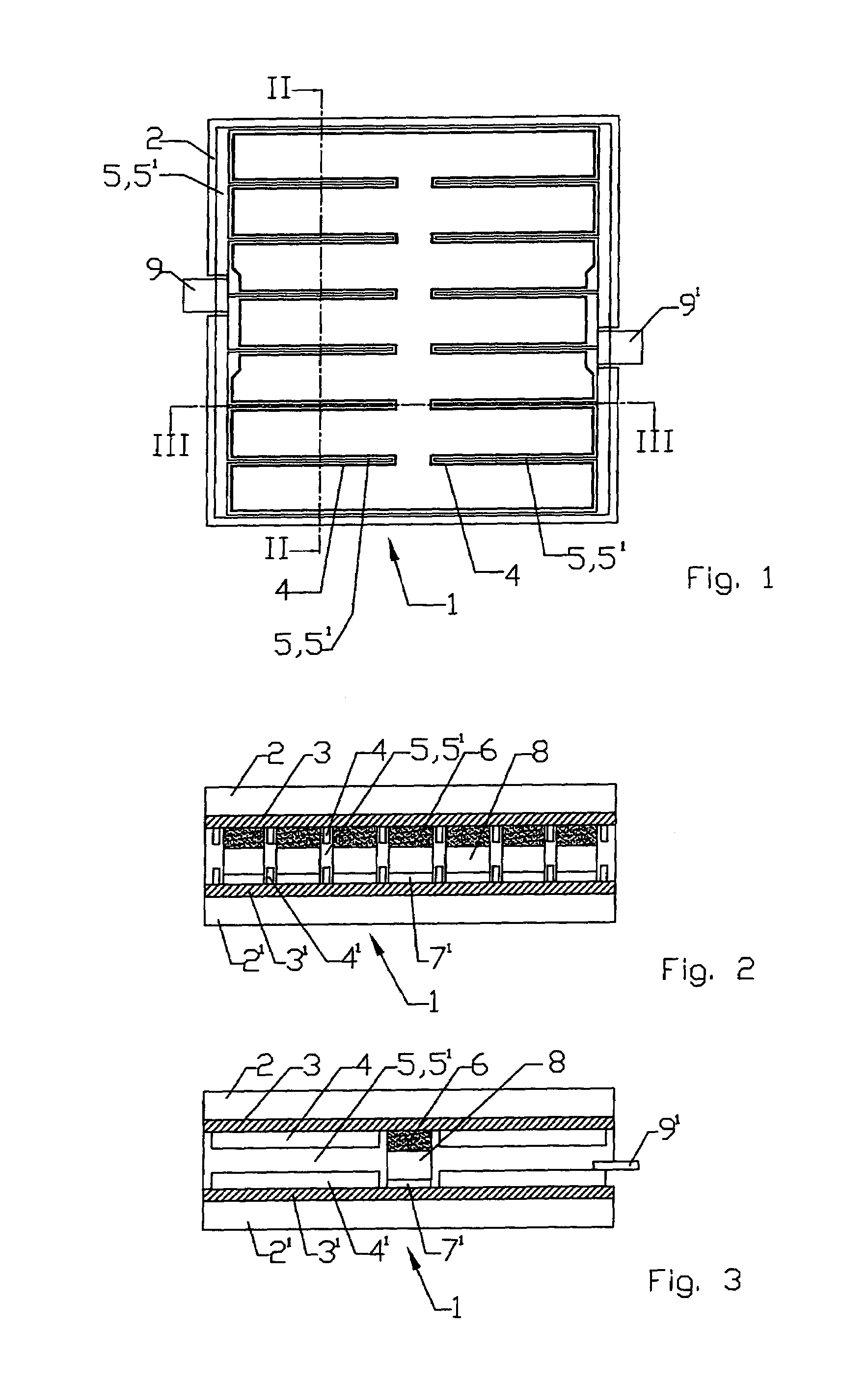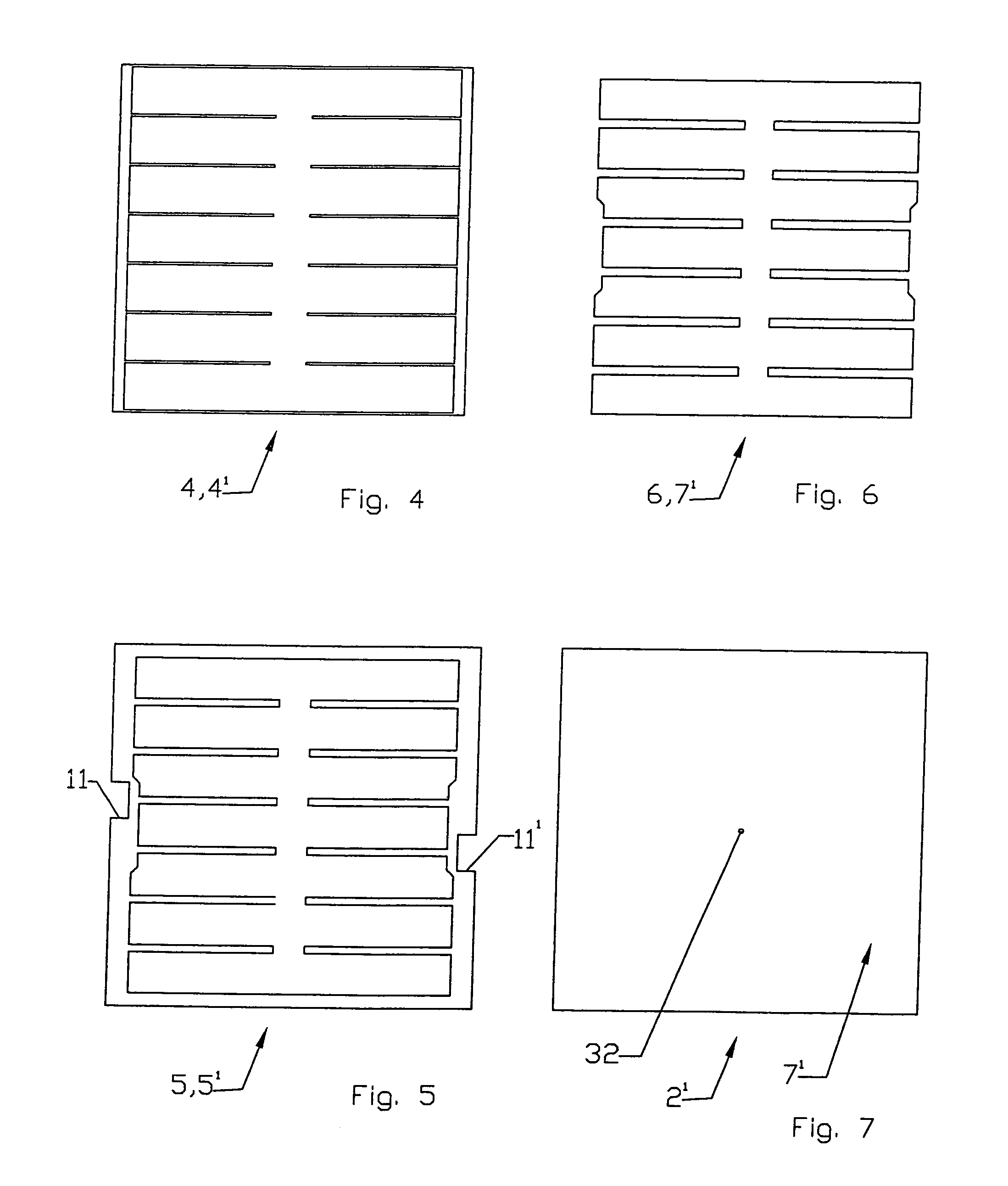Liquid-containing photovoltaic element
- Summary
- Abstract
- Description
- Claims
- Application Information
AI Technical Summary
Benefits of technology
Problems solved by technology
Method used
Image
Examples
Embodiment Construction
[0036]FIGS. 1, 2, 3 show a liquid-containing photovoltaic element 1 which is assembled from square glass plates 2, 2′, on which are successively arranged a TCO layer 3, 3′ of the transparent conducting tin dioxide (SnO2:F) doped with fluorine and a pattern of silver (Ag) conductors 4, 4′ which are covered by insulating layers 5, 5′, fused to form a layer, of a hot-melting polymer foil, for instance a product commercially available from DuPont under the brand name Surlyn®. On the upper glass plate 2, 3, 4 a pattern 6 of dye-sensitized nanocrystalline titanium dioxide (TiO2) is arranged between the insulated Ag conductors 4, on lower glass plate 2′, 3′, 4′ a pattern 7 of a thin layer of platinum (Pt) is arranged between the insulated Ag conductors 4′. The upper substrate 2 with TCO layer 3, Ag pattern 4 and TiO2 pattern 6 forms the work electrode, the lower substrate 2′ with TCO layer 3′, Ag pattern 4′ and Pt pattern 7′ forms the counter-electrode. In the space between work electrode ...
PUM
 Login to View More
Login to View More Abstract
Description
Claims
Application Information
 Login to View More
Login to View More - R&D
- Intellectual Property
- Life Sciences
- Materials
- Tech Scout
- Unparalleled Data Quality
- Higher Quality Content
- 60% Fewer Hallucinations
Browse by: Latest US Patents, China's latest patents, Technical Efficacy Thesaurus, Application Domain, Technology Topic, Popular Technical Reports.
© 2025 PatSnap. All rights reserved.Legal|Privacy policy|Modern Slavery Act Transparency Statement|Sitemap|About US| Contact US: help@patsnap.com



